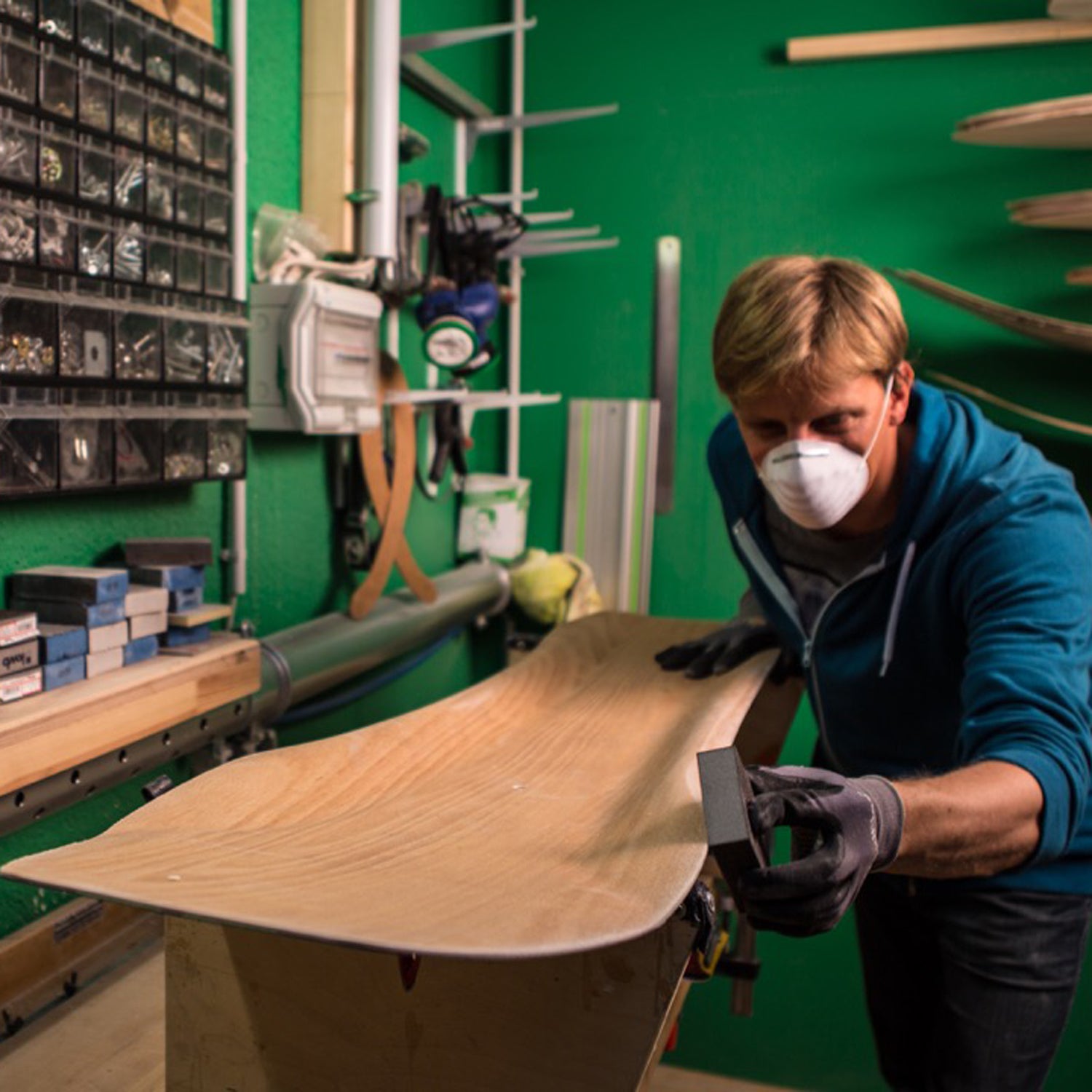If all boardsports trace their roots to surfing, then snowboarding is finding its way home by leaving one seemingly essential piece of equipment behind: bindings.
Powsurfing (also known as noboarding) isn't a new concept. The first Skurfers of the 1960s had only staples for traction. Bindings as we know them didn’t show up until the early 1980s, after which point snowboarding progressed amazingly fast. Now, some riders are going back to the basics. “I snowboard so much for the camera that sometimes it's hard to want to snowboard for myself,” says Snowboarder magazine 2015 Rider of the Year Bode Merrill. “With powsurfing, I never get burnt out because it feels like I'm a beginner in a lot of ways.”
Snowboard cinematographer Pat Fenelon, who’s worked with The North Face, Park City Mountain Resort, and Nike likens this shift in snowboarding to a similar transformation in surfing, where the no-holds-barred progression of aerials and contest riding reached such a high level that some in the sport began looking backwards for inspiration. Twin-fins, obscure shapes, and surfing for its own sake found its own relevancy amidst the World Surf League.
Thanks to new technology, refined craftsmanship, and innovative design, the latest powsurf boards are technical beautifies, capable of powerful carves, surfy lines, and even airs. “It's rad that local guys are coming up with individual shapes,” says founder Jeff Pensiero, who sees powsurfing as a big part of the sport’s future. “From to to to , these are all made by people who love snowboarding and make these incredibly artistic interpretations of snow sliding devices for pure powder enjoyment.”
Take the guys behind Aesmo. Building boards began as a hobby in 2006 for Austrian pro snowboarders Wolfgang “Wolle” Nyvelt and Stefan Gruber. Over the past ten years, their garage-grown project has turned into a full-fledged business. Now their company, Aesmo (also styled as Äsmo), makes what many consider the world’s most cutting-edge powsurf boards.
Taking design cues from skateboarding, surfing, and snowboarding, Nyvelt and Gruber pair boutique craftsmanship with state-of-the-art CNC machining. The boards (each of which Nyvelt describes as a labor of love), take multiple days of hands-on attention to produce.
“We start with making templates just like surfboard templates,” he says. “Then we will draw the outline and make some minor changes.” After that, it’s time to sit back and reflect on a design. Nyvelt will ride powder in the Austrian Alps around his home to find inspiration. Once he decides on the shape of a board, Nyvelt then determines rocker profile and prepares the mold in his workshop.
Nyvelt prides Aesmo board on creating a lot of lift in deep snow and maintaining control through technical lines. An ambassador for pushing the sport and powsurf board design forward, Nyvelt isn’t concerned with bettering the competition. “I’m not interested in who is better than who,” he explains. “There are lots of unique approaches and shapes out there—people who are great friends—and I want each and every board in my quiver.”


